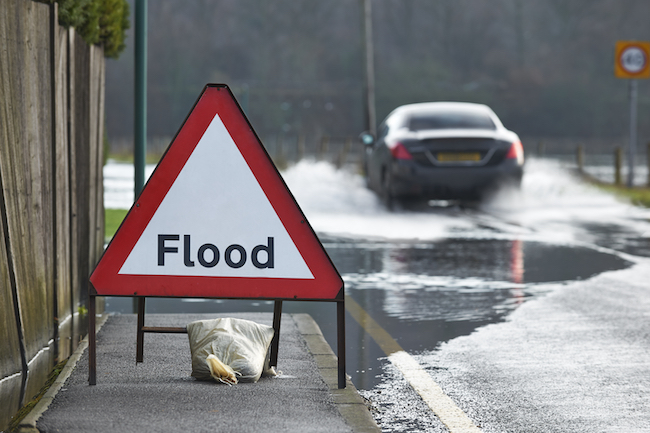Cars aren’t really designed to drive through water. Water can damage your car’s brakes, electrics, and other key systems.
So if possible, you should avoid driving through flood water at all costs. If you get an advanced flood warning for your area, try and move your car to higher ground, or to an area with no risks in place.
But sometimes you may have no choice but to drive through flood water. In which case, there are precautions you can take to avoid both short and long-term risks.
When Are You Likely To Encounter Flood Water?
A period of heavy rains may result in blocked drains, burst river banks and excessive standing water. But even in the driest months of the year, a burst water main can still cause widespread flooding.
Also, some rural roads contain fords – areas where the road dips briefly into a passing river.
What To Do If You Encounter Flood Water
Whether it’s a flood or a ford, if you ever encounter significant amounts of water in the road, try and find an alternative route – even if it takes you significantly out of your way, and even if it means waiting in traffic. You’ve no way of knowing how deep the water is, how fast it’s flowing, or whether it contains any hidden dips or obstacles that could seriously damage your car.
And you should never drive into moving water, or into water that’s more than 10 cm (4 inches) deep.
It takes just 60cm of water to make cars float, and as little as 30cm of water can be enough to move a car. And even the slightest bit of water can totally wreck your engine if it gets into your system.
How To Drive Through Flood Water Safely
So if you’ve no choice but to drive through an area of flood water, here’s how to do it safely:
- Let any approaching cars pass through the water first.
- Drive as slowly as you can, and in as straight a line as you can. This will give you the most control over your steering, and it will avoid creating any waves that could soak or otherwise endanger pedestrians or other road users.
- If you feel yourself starting to skid or slide (a process known as aquaplaning), take your foot off the accelerator and hold the steering lightly. This way you can slow down gradually until your tyres are able to grip the road again.
- Beware of visible kerbs, potholes, and manholes.
Once you’ve made it out of the flood water, test your brakes as soon as you can.
Also, any water in your car’s system could cause problems with your electrics that might not be immediately apparent. So it might be a good idea to book your car in for a service as soon as possible, to avoid any nasty surprises in the future.
Stay Safe In Wet Weather
Not all wet weather leads to floods. But all wet weather makes for hazardous driving conditions. Read our guide to staying safe on the roads while it’s raining.
If the weather’s going to be particularly severe, then the government may issue a weather warning. You should try to avoid driving during a weather warning. But if your journey’s unavoidable, then you can at least rest assured that your comprehensive car insurance will still cover you for most things.




